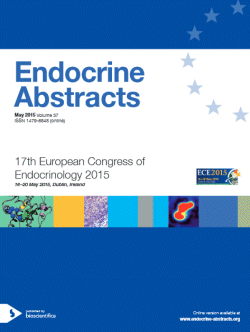Searchable abstracts of presentations at key conferences in endocrinology
Symposia
Puberty: new mechanisms
ea0037s15.1 | Puberty: new mechanisms | ECE2015
Epigenetics of Female Puberty
Ojeda Sergio , Lomniczi Alejandro , Wright Hollis , Toro Carlos
A prevailing concept regarding the mechanism controlling the timing of puberty proposes that GnRH release from the hypothalamus increases at puberty due to a loss of transsynaptic inhibition, accompanied by an increase in neuronal/glial excitatory inputs to GnRH neurons. Without negating the importance of this intercellular communication process, recent evidence suggests that a critical inhibitory/excitatory Yin-Yang mechanism regulating the advent of puberty is epigenetic in ...
ea0037s15.2 | Puberty: new mechanisms | ECE2015
GnRH development and function: lessons from semaphorins
This talk summarizes recent studies analysing the contribution of specific guidance molecules named semaphorins in the development and adult function of gonadotropin-releasing hormone (GnRH) neurons. In vertebrates, the GnRH decapeptide regulates the secretion of luteinizing hormone and follicle stimulating hormone, which govern puberty onset, gametogenesis, and estrous cycling, from anterior pituitary gonadotropes. During embryonic development, these cells originate from the ...
ea0037s15.3 | Puberty: new mechanisms | ECE2015
Genetic regulators of the timing of puberty
The timing of puberty varies widely between individuals and in girls early puberty timing is associated with higher risks for adult obesity, type 2 diabetes (T2D), cardiovascular disease (CVD), breast cancer and all-cause mortality. Understanding the regulation of puberty timing therefore has relevance to disease pathogenesis as well as developmental and human biology. Large-scale genome-wide association studies have identified robust evidence for more than 100 independent gen...




